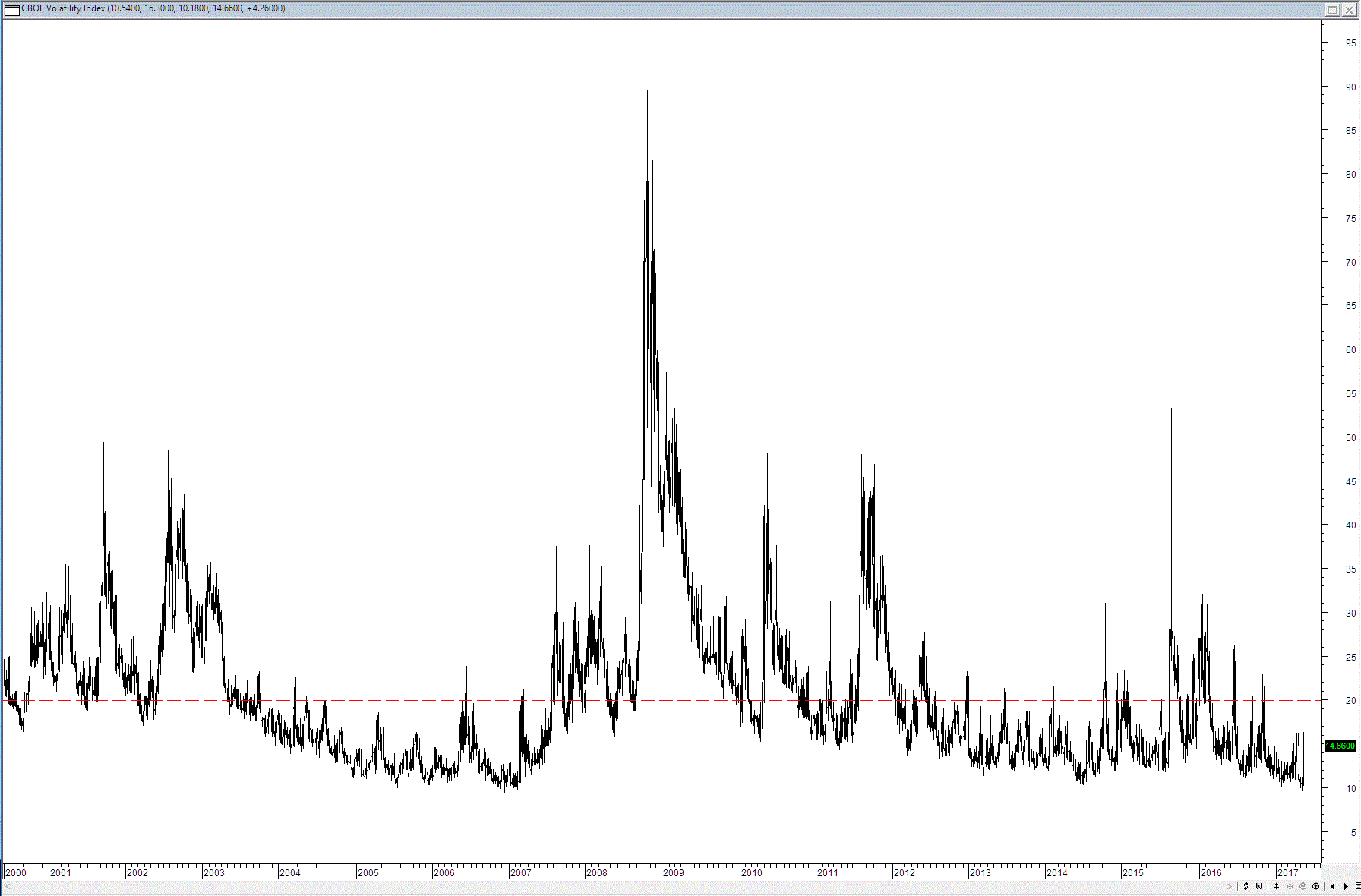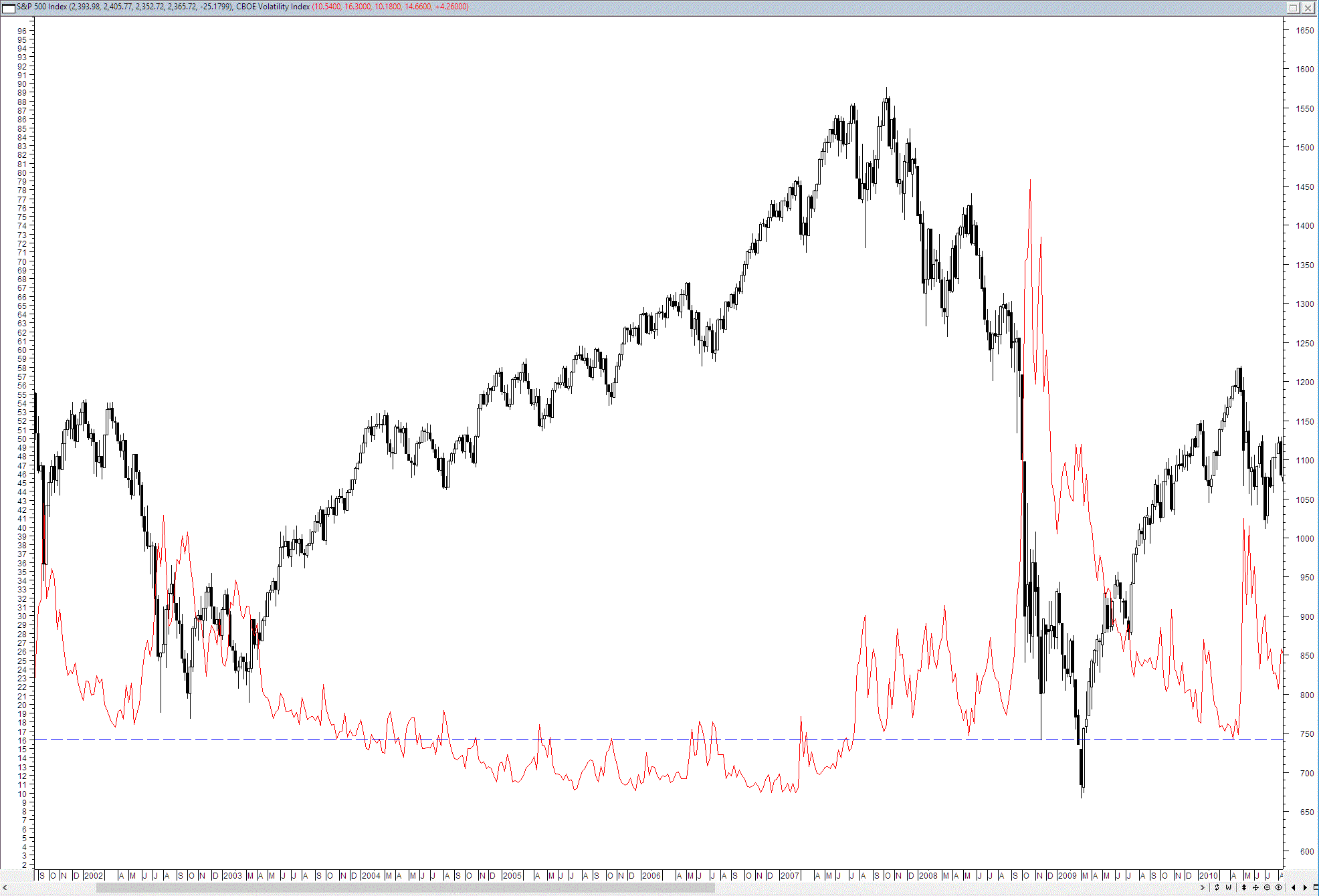So says this piece in the Fairfax press this morning. The headline contains two interesting assumptions. That the market has become more volatile and that this volatility leads to the potential for profit. I will state at the outset that the linkage between profit and volatility that is often asserted by both some members of the finance community and the financial press at large is wrong – no such nexus exists. It is based upon a profound misunderstanding between trend and volatility. Volatility is simply the speed and magnitude of price movements, there is no directional component implied in any statement about volatility. Trend is the capacity of price to demonstrate an underlying direction on price distribution.
The first statement about the return of volatility is an easy one to look at. In this instance the volatility measure being referred to is the somewhat flawed marker the VIX. The chart below shows a spike in the VIX when the ginger gibbon Donald Trumps month went from bad to worse.
However, on this chart I have plotted the long term average daily value for the VIX, at present this long term average stands at 20.1. The market is still substantially below this figure and as can be seen from the chart the VIX is prone to short lived spikes. These spikes are inevitable because at its core the VIX is a measure of perception and perception is a uniquely flawed mechanism for generating any form of metric. You can think of the VIX as a sort of how do you feel today index. As such it is prone to all sorts of maladies just like an individual is.
The question of whether an increase in volatility is a good thing is an interesting question and it is the one which often demonstrates peoples misunderstanding of volatility. The chart below focuses on the period 2003 to 2008 so it encompasses the US markets rise post the Dot com boom and the resultant carnage of the GFC.
The central theme is that high volatility leads to an increase in opportunity and therefore an increase in traders profitability. On the chart above I have marked the average volatility for the period 2003 to 2008, which for this period sat at 16.1. As can be seen for the majority of the period the VIX sat at below its long term volatility. During this period the market more than doubled. Low volatility is not an anathema to the potential for profit, the inability of the market to establish a trend is of more of a concern for traders.









Hi Chris,
I went to the original article, read it once and then again. I still didn’t find anywhere it implied that ‘volatility leads to the potential for profit’, which statement you questioned. A few quoted opinions of the traders rather point out that the low volatility environment can be deceptive and lead to higher risk decision by investors. For example, “Low volatility can itself become a high-risk environment, because people can start overpaying for assets. This is a healthy reminder that, even in a growing climate, risk needs to be managed”. I
Frankly speaking, I can’t agree more with the main idea of the article that low volatility is never good time for complacency in the markets. So, I am sort of surprised what you argued against? The article makes full sense to me although I completely agree with you that higher volatility doesn’t lead to better traders’ profits (well, probably except HFT ones?).
Regards, Sergy
I read this article too, I knew CT would have something to say about it.